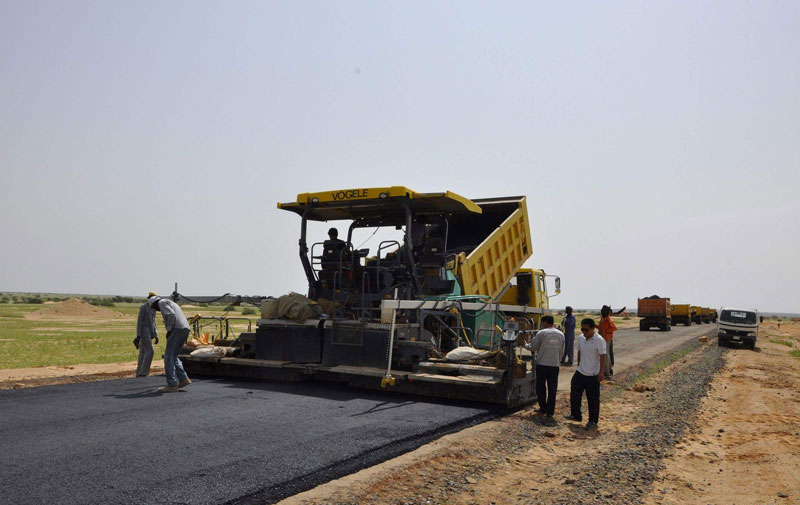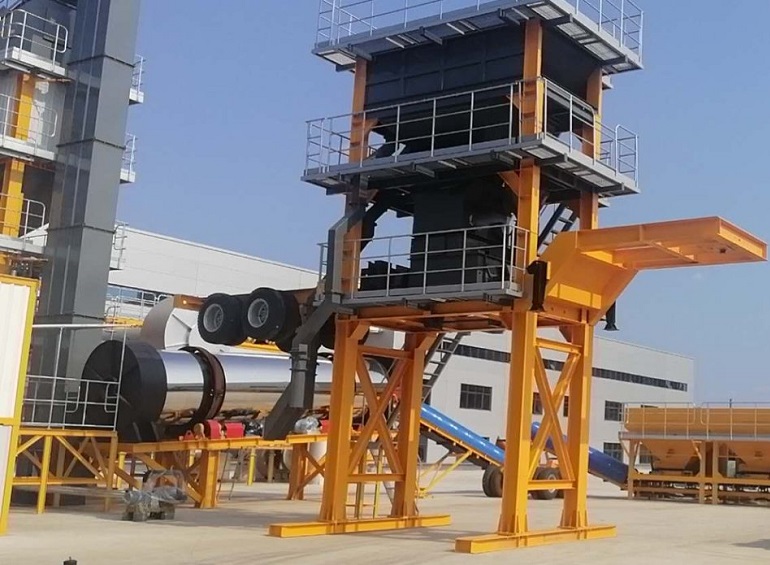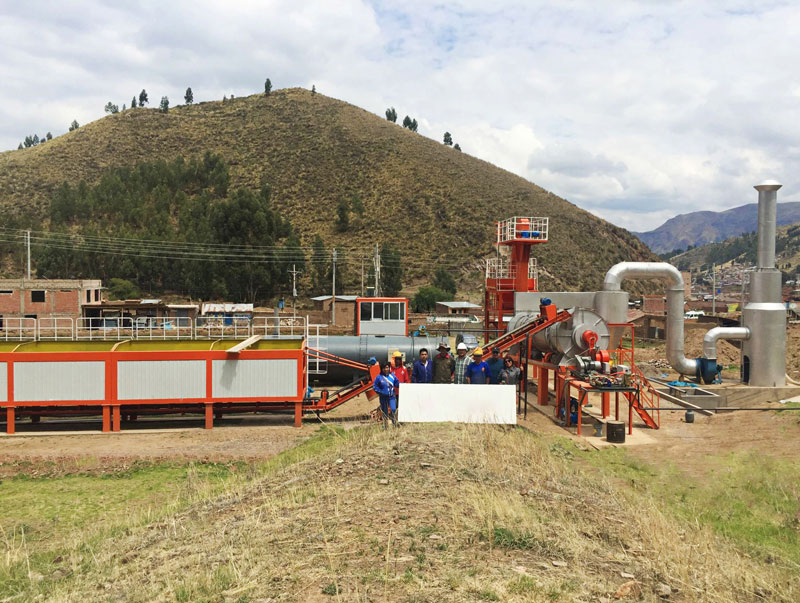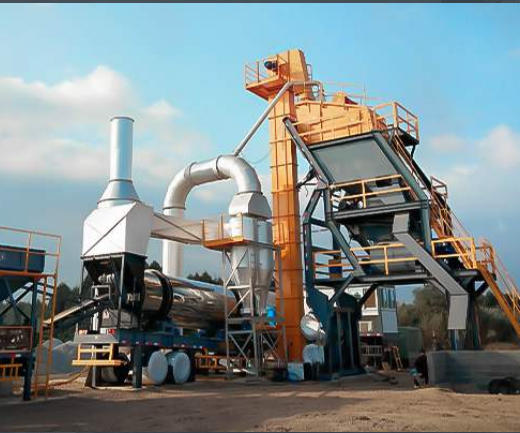Detailed classification of asphalt concrete
Detailed classification of asphalt concrete
1 Traditional asphalt concrete surface (AC): ordinary dense graded asphalt concrete
1.1 Classification by the particle size of the asphalt mixture aggregate.
1.1.1 Fine-grained asphalt concrete: AC—9.5mm or AC—13.2mm.
1.1.2 Medium-granular asphalt concrete: AC-16mm or AC-19mm.
1.1.3 Coarse-grained asphalt concrete: AC-26.5mm or AC-31.5mm.

The combination principle is that the maximum particle size of the asphalt surface layer aggregate should gradually increase from the upper layer to the lower layer. The upper layer should use medium-grain and fine-grain type, and the maximum particle diameter of the asphalt mixture aggregate in the upper layer should not exceed 1/2 of the layer thickness, and the maximum particle diameter of aggregate in the middle and lower layers should not exceed 2/3 of the layer thickness.
1.2 Classification by the porosity of the asphalt mixture after compaction
1.2.1 Type Ⅰ dense graded asphalt concrete: porosity (3% ~ 6%)
1.2.2 Type II dense-graded asphalt concrete: porosity (4% ~ 10%)
AM type open grade hot mix asphalt crushed stone: porosity (greater than 10%)
The combination principle is that at least one layer of the asphalt surface layer is a type I dense-graded asphalt concrete to prevent water infiltration. If type II asphalt concrete is used for the upper layer, type I asphalt concrete must be used for the middle layer. AM type open-graded asphalt crushed stone should not be used as the surface layer, and it can only be used as the connection layer.
2.Crushed Asphalt Concrete Surface (SAC)
The multi-crushed asphalt mixture is an asphalt mixture formed by using more coarse crushed stones to form a skeleton, and the asphalt mortar fills the pores in the skeleton and glues the skeletons together. The specific composition is: the coarse aggregate content is 69% to 78%, the mineral powder is 6% to 10%, and the oil-stone ratio is about 5%. The practice of several highways has proved that the multi-gravel asphalt concrete surface layer not only provides a deeper surface structure, but also has the smaller voids and smaller water permeability of traditional type I asphalt concrete, and at the same time has better resistance Deformation ability (higher dynamic stability). In other words, "Multi-gravel asphalt concrete has the advantages of both traditional type I asphalt concrete and type II asphalt concrete, while avoiding the shortcomings of the two traditional asphalt concrete structural forms."
3.Asphalt Mastic Crushed Stone Mixture Surface (SMA)
Asphalt horseshoe fat crushed stone mixture (SMA) is an asphalt horseshoe fat binder composed of asphalt, mineral powder and fiber stabilizer, which is a mixture formed by filling the intermittently graded mineral framework.
The structural composition of SMA can be summarized as "three more and one less, that is: more coarse aggregate, more ore powder, more asphalt, and less fine aggregate". Specifically: ① SMA is an intermittently graded asphalt mixture. The proportion of coarse aggregates above 5mm is as high as 70% to 80%, and the amount of mineral powder is 7% to 13%. limits). The resulting intermittent gradation rarely uses fine aggregates; ② in order to add more asphalt, on the one hand, increase the amount of mineral powder, while using fiber as a stabilizer; ③ more asphalt, up to 6.5% to 7%, High cohesiveness is required, and it is hoped that asphalt with a small penetration, high softening point, and good temperature stability is preferred (modified asphalt is preferred).
SMA's characteristics: Asphalt horseshoe fat gravel mixture is currently recognized internationally (used more often) as a asphalt surface mixture with strong anti-deformation ability and good durability. Due to the good coextrusion of the coarse aggregate, the mixture has very good high temperature resistance to rutting. At the same time, the low temperature deformation performance and water stability are also improved due to the bonding effect of asphalt mastic. The fiber stabilizer is added to keep the asphalt binder with high viscosity, and its paving and compaction effect is better. Discontinuous gradation forms large pores on the surface, large structural depth, and good sliding resistance. At the same time, the gap of the mixture is very small, and the aging resistance and durability are very good, thereby improving the pavement performance of the asphalt mixture.
4.Rubber Asphalt (AR)
Rubber asphalt is processed from raw tire tires into rubber particles, and then combined according to a certain thickness gradation ratio. At the same time, a variety of high polymer modifiers are added, and under fully mixed high temperature conditions (above 180 ° C) ), Modified asphalt cementing material formed after sufficient swelling reaction with matrix asphalt. Rubber asphalt has high temperature stability, low temperature flexibility, aging resistance, fatigue resistance, water damage resistance and other properties. It is an ideal environmentally friendly pavement material. At present, it is mainly used in stress absorption layers and surface layers in road structures. .
After 50 years of application, rubber asphalt has formed two mature graded mixture product lines. Compared with conventional asphalt mixtures, rubber asphalt mixtures have a higher amount of asphalt (about 7.5%).
(1) Open-graded mixture (AR-OGFC): It is a mixture of high-volume rubber asphalt (9-10%) and aggregate with a single particle size.
Features and applications: Open-graded mixtures have good anti-slip, splash-proof, noise reduction and long-term stability, making them ideal surface materials for expressways and urban expressways. At the same time, the outstanding anti-reflective cracking ability of the grading mixture is widely used in ultra-thin covering of cement pavement.
(2) Intermittent gradation mixture (AR-GAP): It is made by mixing the intermediate particle size with intermittent gradation and rubber asphalt. The dynamic stability reaches above 3000, and the freeze-thaw splitting value reaches above 80.
Features and applications: Due to its good surface structure, water-tightness, and shear stability, intermittent grading and mixtures are commonly used in urban road surface and reinforcement structures with more crossings and speed changes.
5.SBS Modified Asphalt Concrete (SBS)
SBS modified asphalt is added with 2.5%, 3.0% and 4.0% of SBS modifier on the basis of the original matrix asphalt. Compared with the original asphalt, the modified asphalt has increased high temperature viscosity and softened point. high. Under good design mix and construction conditions, the durability and high temperature stability of the asphalt pavement are significantly improved.



 RU
RU MM
MM AR
AR




